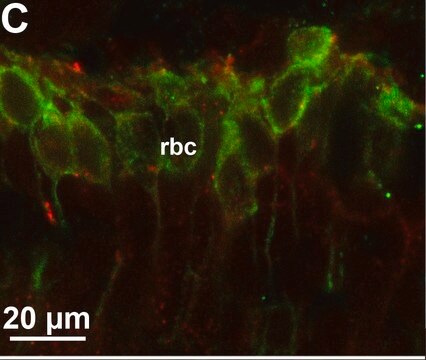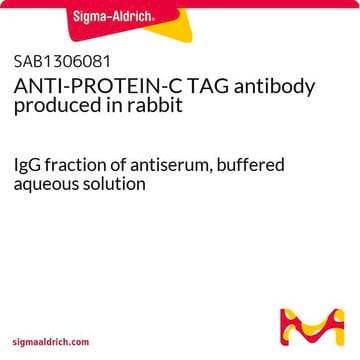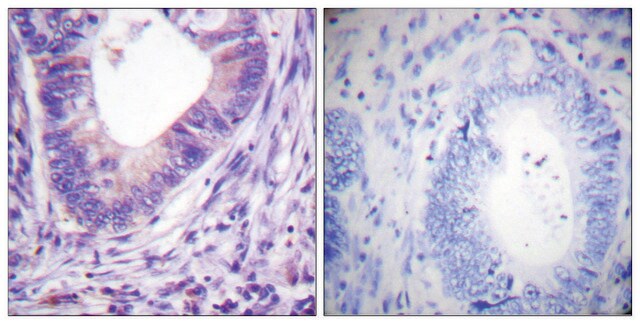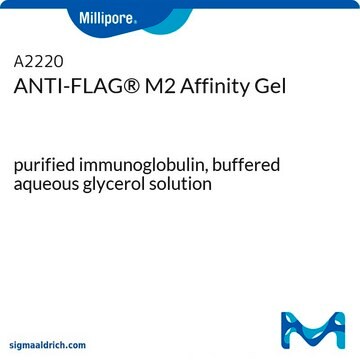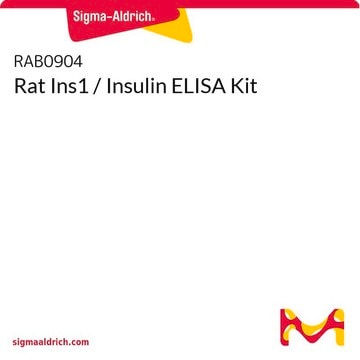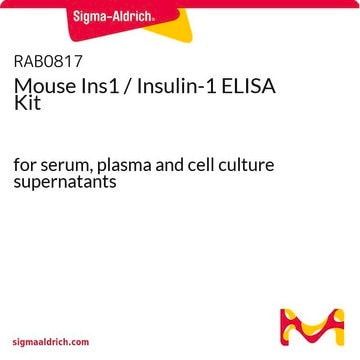P5704
Monoclonal Anti-Protein Kinase C (PKC) antibody produced in mouse
clone MC5, ascites fluid
Sinónimos:
Monoclonal Anti-Protein Kinase C, Anti-PKC
Seleccione un Tamaño
524,00 €
Seleccione un Tamaño
About This Item
524,00 €
Productos recomendados
origen biológico
mouse
Nivel de calidad
conjugado
unconjugated
forma del anticuerpo
ascites fluid
tipo de anticuerpo
primary antibodies
clon
MC5, monoclonal
mol peso
antigen 80 kDa
contiene
15 mM sodium azide
reactividad de especies
rat, bovine, mouse, human
técnicas
immunohistochemistry (frozen sections): suitable
immunoprecipitation (IP): suitable
microarray: suitable
western blot: 1:500 using rat brain cytosol preparation
isotipo
IgG2a
Nº de acceso UniProt
Condiciones de envío
dry ice
temp. de almacenamiento
−20°C
modificación del objetivo postraduccional
unmodified
Información sobre el gen
human ... PRKCB(5579) , PRKCZ(5590)
mouse ... Prkcb(18751) , Prkcc(18752)
rat ... Prkcb(25023) , Prkcg(24681)
¿Está buscando productos similares? Visita Guía de comparación de productos
Descripción general
Especificidad
Inmunógeno
Aplicación
Cláusula de descargo de responsabilidad
¿No encuentra el producto adecuado?
Pruebe nuestro Herramienta de selección de productos.
Código de clase de almacenamiento
10 - Combustible liquids
Clase de riesgo para el agua (WGK)
WGK 3
Punto de inflamabilidad (°F)
Not applicable
Punto de inflamabilidad (°C)
Not applicable
Elija entre una de las versiones más recientes:
Certificados de análisis (COA)
¿No ve la versión correcta?
Si necesita una versión concreta, puede buscar un certificado específico por el número de lote.
¿Ya tiene este producto?
Encuentre la documentación para los productos que ha comprado recientemente en la Biblioteca de documentos.
Los clientes también vieron
behavioral ability and analgesic effects on rats with neuropathic
pain and expression of protein kinase C in the spinal dorsal horn
Filtros activos
Nuestro equipo de científicos tiene experiencia en todas las áreas de investigación: Ciencias de la vida, Ciencia de los materiales, Síntesis química, Cromatografía, Analítica y muchas otras.
Póngase en contacto con el Servicio técnico